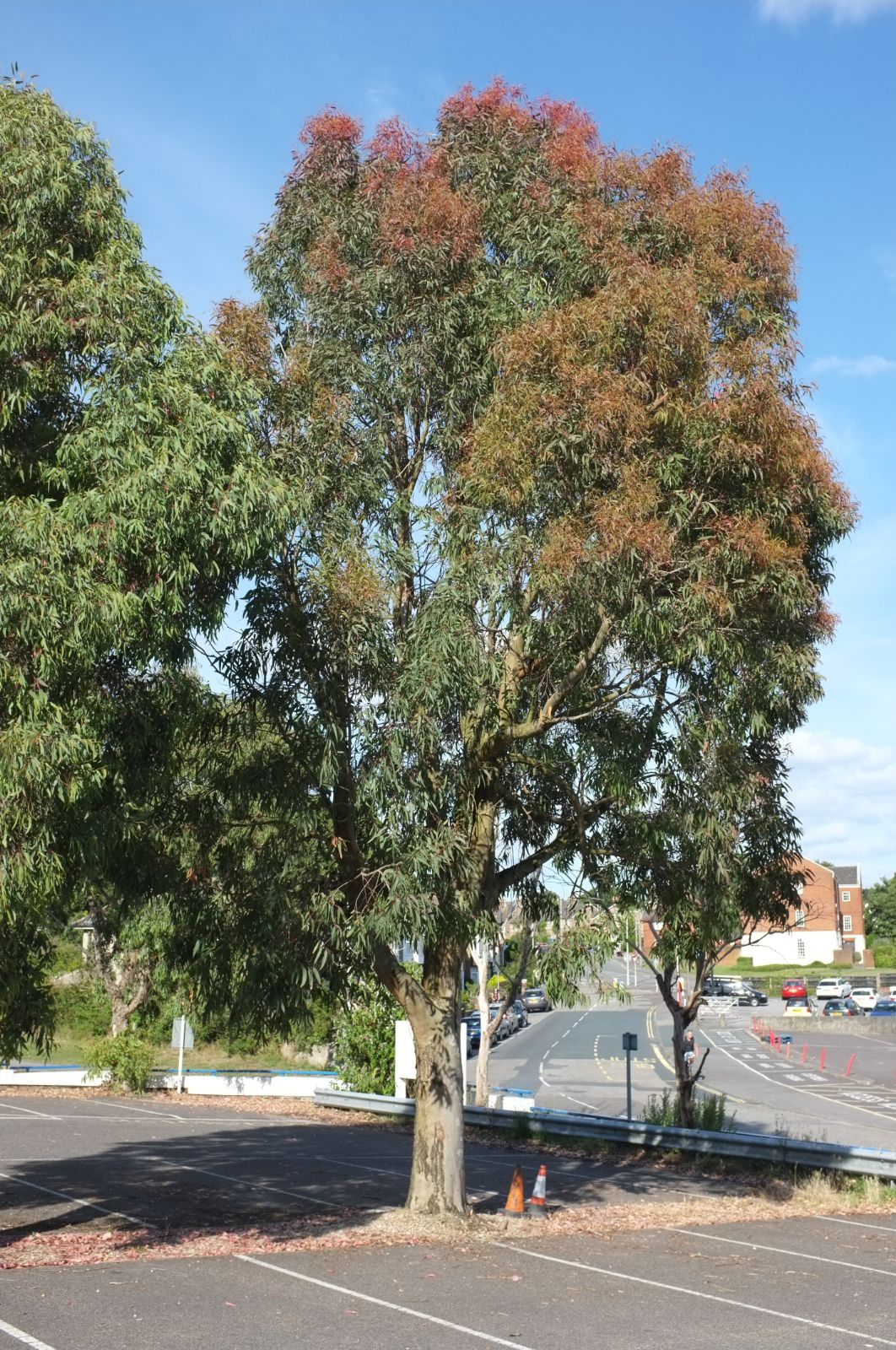Eucalyptus fraxinoides
Credits
Article from New Trees by John Grimshaw & Ross Bayton
Recommended citation
'Eucalyptus fraxinoides' from the website Trees and Shrubs Online (treesandshrubsonline.
Genus
Common Names
- White Mountain Ash
Other taxa in genus
- Eucalyptus acaciiformis
- Eucalyptus albida
- Eucalyptus amygdalina
- Eucalyptus archeri
- Eucalyptus blakelyi
- Eucalyptus bridgesiana
- Eucalyptus brookeriana
- Eucalyptus camaldulensis
- Eucalyptus camphora
- Eucalyptus chapmaniana
- Eucalyptus cinerea
- Eucalyptus coccifera
- Eucalyptus cordata
- Eucalyptus crenulata
- Eucalyptus cypellocarpa
- Eucalyptus dalrympleana
- Eucalyptus delegatensis
- Eucalyptus elliptica
- Eucalyptus fastigata
- Eucalyptus globulus
- Eucalyptus gregsoniana
- Eucalyptus gunnii
- Eucalyptus johnstonii
- Eucalyptus kybeanensis
- Eucalyptus lacrimans
- Eucalyptus laophila
- Eucalyptus leucoxylon
- Eucalyptus macarthurii
- Eucalyptus macrorhyncha
- Eucalyptus mannifera
- Eucalyptus melliodora
- Eucalyptus mitchelliana
- Eucalyptus moorei
- Eucalyptus morrisbyi
- Eucalyptus neglecta
- Eucalyptus nicholii
- Eucalyptus nitens
- Eucalyptus nova-anglica
- Eucalyptus obliqua
- Eucalyptus oreades
- Eucalyptus ovata
- Eucalyptus parvula
- Eucalyptus pauciflora
- Eucalyptus praecox
- Eucalyptus radiata
- Eucalyptus regnans
- Eucalyptus remota
- Eucalyptus risdonii
- Eucalyptus rodwayi
- Eucalyptus rubida
- Eucalyptus saligna
- Eucalyptus sideroxylon
- Eucalyptus stellulata
- Eucalyptus subcrenulata
- Eucalyptus tenuiramis
- Eucalyptus urnigera
- Eucalyptus viminalis
Tree to 40 m, 1 m dbh. Bark greyish black and fibrous on the lower trunk; smooth, white, grey or yellow above, often with white ‘scribbles’ (insect tracks). Branchlets red. Juvenile leaves sessile, ovate to lanceolate, light grey or blue-green. Adult leaves thick and glossy green, 8–16 × 1–2 cm, lanceolate and/or falcate, lateral veins indistinct, margins entire, apex acuminate or hooked; petiole flattened or channelled, 1–1.5 cm long. Inflorescences solitary and axillary; umbellasters with 7–11 flowers. Flower buds ovoid or club-shaped; hypanthium 0.3–0.4 cm wide; stamens white or cream. Capsule cylindrical, globose or urn-shaped, 0.6–1.1 cm diameter; valves four to five, included. Boland et al. 1984, Chippendale 1988. Distribution AUSTRALIA: New South Wales (Tablelands), Victoria (Howe Range). Habitat Sclerophyllous forest on cool, moist mountain slopes or peaks, between 150 and 1000 m asl. USDA Hardiness Zone 9. Conservation status Not evaluated.
In the view of the Gum Group (2007), Eucalyptus fraxinoides is one of the most beautiful of eucalypts, to the extent that the epithet ‘gorgeous’ was employed to describe it. Its beauty lies in part in the shape of the tree, which is conical around a straight trunk when young; also in its green and white peeling bark, and the red new growth that forms a haze around the tree when in active growth and illuminated by the sun shining through it. To counteract all this, it is not very hardy, especially as a young plant, and for success in our area needs good drainage in a sheltered site. It is also very intolerant of lime, and soon shows symptoms of chlorosis. There are a few specimens in the United Kingdom, however, and rapid growth rates have been recorded (11–12 m since planting in 2002 in Oxfordshire, for example), although others have found it rather slow-growing. On the positive side, trees coppiced down – either deliberately or by frost – produce a mass of the fabulous red young foliage.

